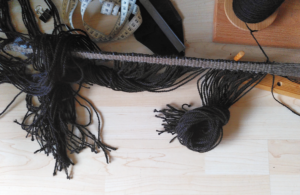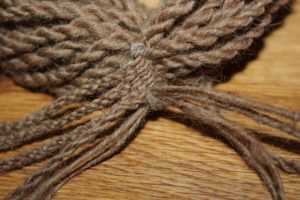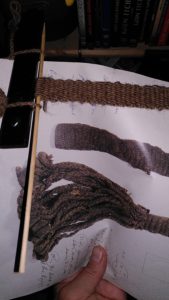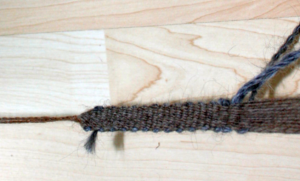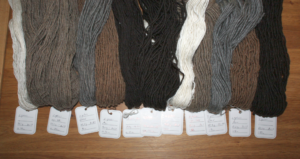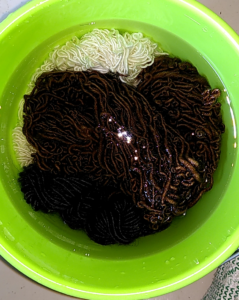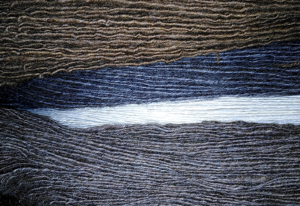Calculations for the fabric that I'm currently spinning for are finished, and, well, what shall I say? Those bronze age fabrics are... big. BIG.
Which, consequently, means that even though they only have a few threads per centimetre (around 4, overall), they do add up. Which means there's a lot more spinning to do until I'm finished. Overall yarn requirement for the piece of fabric needed to make the Trindhoj find man's garments, consisting of some kind of wraparound tunic and a half-oval cloak, is about... 5700 metres. Plus a bit of wiggle room.
Even spinning quite quickly, and winding into hanks quickly, and wet-finishing several skeins at once (which is taking a lot less time than doing them one by one), that eats up a hunk of hours. So if you're looking for me, I'll be at my spinning place... making yarn. In very nice cat company.
Have you measured your production spinning speeds? If so, I'd love to hear about how much you spin in an hour.
If you haven't done it yet, but are curious - my recommendation is to use a stopwatch, and spin over several hours before measuring. Doing just half an hour or one hour can result in quite different speeds than production over more hours. (Don't ask me how I know...) Note down how long you were spinning for the sessions if your stopwatch tends to eat the current time (I have one that will turn itself off after a while, and then the numbers are gone.) For measuring, find out the circumference of your skeiner and count the rotations.
Then do the metres spun by hours division, and voilà, you have your production speed number for this yarn type and thickness with this tool and this type of fibre... which might be quite different from a different yarn. Which, I find, makes spinning an even more interesting thing!
Which, consequently, means that even though they only have a few threads per centimetre (around 4, overall), they do add up. Which means there's a lot more spinning to do until I'm finished. Overall yarn requirement for the piece of fabric needed to make the Trindhoj find man's garments, consisting of some kind of wraparound tunic and a half-oval cloak, is about... 5700 metres. Plus a bit of wiggle room.
Even spinning quite quickly, and winding into hanks quickly, and wet-finishing several skeins at once (which is taking a lot less time than doing them one by one), that eats up a hunk of hours. So if you're looking for me, I'll be at my spinning place... making yarn. In very nice cat company.
Have you measured your production spinning speeds? If so, I'd love to hear about how much you spin in an hour.
If you haven't done it yet, but are curious - my recommendation is to use a stopwatch, and spin over several hours before measuring. Doing just half an hour or one hour can result in quite different speeds than production over more hours. (Don't ask me how I know...) Note down how long you were spinning for the sessions if your stopwatch tends to eat the current time (I have one that will turn itself off after a while, and then the numbers are gone.) For measuring, find out the circumference of your skeiner and count the rotations.
Then do the metres spun by hours division, and voilà, you have your production speed number for this yarn type and thickness with this tool and this type of fibre... which might be quite different from a different yarn. Which, I find, makes spinning an even more interesting thing!




